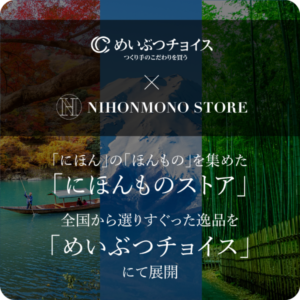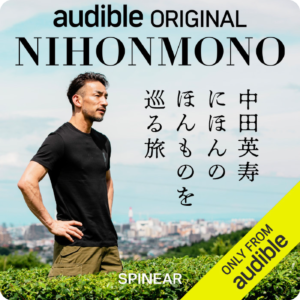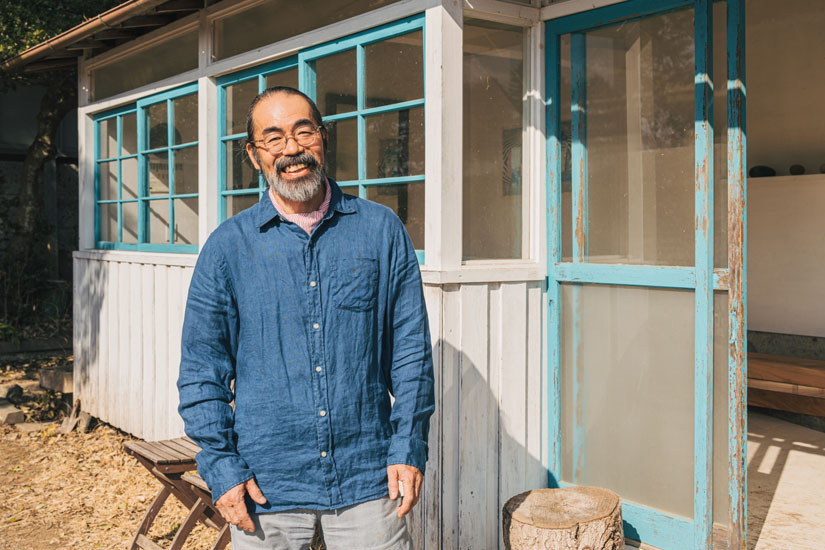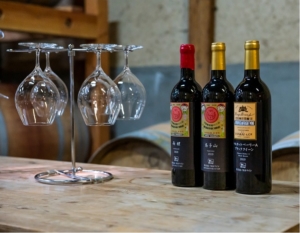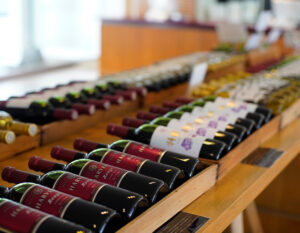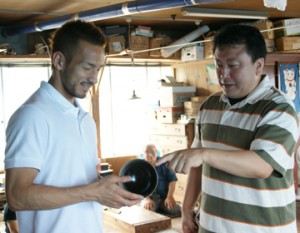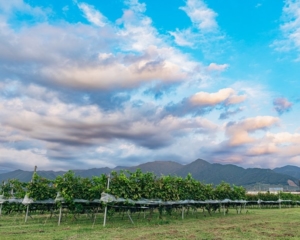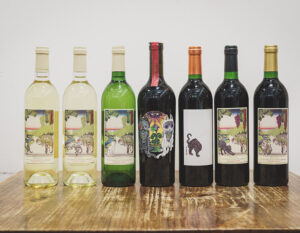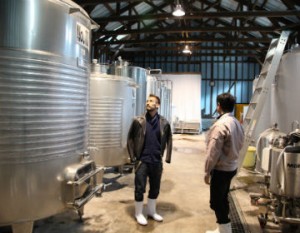Hideki Takayama is a woodworker who creates architectural interiors and furniture in Mashiko Town. Mr. Takayama is also involved in the redevelopment of a historical building in Kyoto, the former Kyoto Central Telephone Station, and has gained recognition for his work on the architectural project of the Ace Hotel Kyoto, for which Kengo Kuma supervised the architectural design.
Imagining people and space with an emphasis on human connection
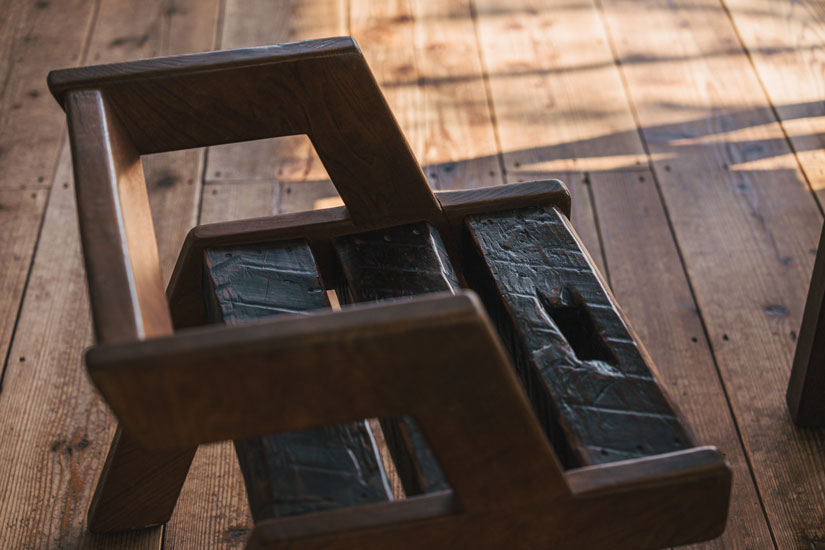
Mr. Takayama creates furniture that can enjoy the aging process of wood by combining old and discarded lumber. The warmth of his work is expressed through the importance placed on the texture of the wood.
Mr. Takayama values human relationships and says, “I don’t take orders unless I have a connection with the client.” He communicates with the client, receives the client’s ideas, and gives form to the furniture by envisioning “where it will be placed and what it will be used for. This is why he is able to create furniture that blends naturally with the space and feels right at home there.
Furniture made from old wood that fits well in an advanced space
There is one place where one can strongly feel Mr. Takayama’s sense of the world. That is “Shinpukan” located near Sanjo Street in Kyoto. The facility is a one-of-a-kind commercial space where the latest trends meet Kyoto’s originality, with a lineup of stores unique to Kyoto in addition to new business model stores that are new to the Kansai region and Kyoto. The Ace Hotel Kyoto, located in the Shinpukan building, was created as Asia’s first Ace Hotel based on the concept of “East Meets West. The oval tables and benches custom-designed by Mr. Takayama can be seen in the restaurant “Mr. Maurice’s Italian” in the “Ace Hotel Kyoto.
In addition, “Pilgrim Surf Supply KYOTO” handled by BEAMS opened in “Shinpukan. Pilgrim Surf Supply, a select store from Brooklyn, New York, proposes a lifestyle with outdoor activities centering on surfing through the filter of American East Coast culture, based on the concept of a “dual life in the city and nature. Pilgrim Surf Supply proposes a lifestyle of outdoor activities centered on surfing through the filter of American East Coast culture. The main table at Pilgrim Surf Supply KYOTO was designed by Mr. Takayama.
Self-building a home in Mashiko, where he moved to
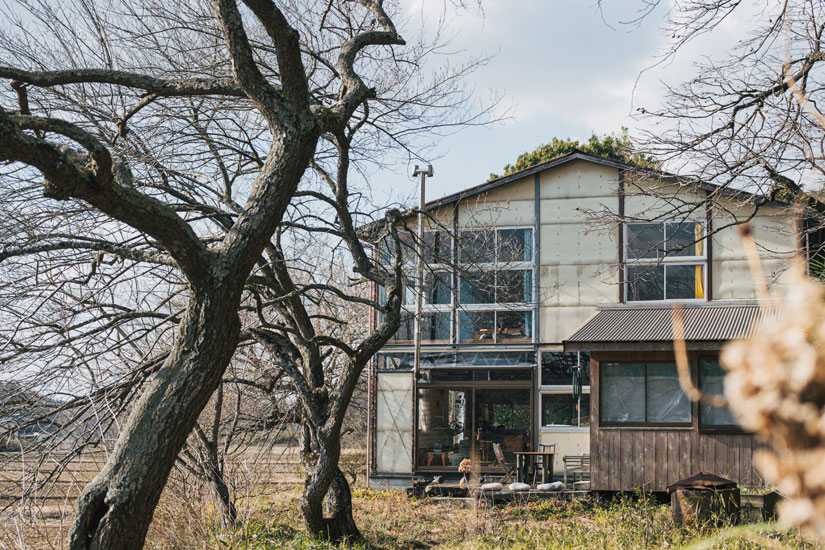
Mashiko is the home of ceramics. Located in the southeastern part of Tochigi Prefecture, Mashiko has been famous nationwide as a pottery production center since the end of the Edo period. Mr. Takayama’s home and studio, where he produces woodwork and furniture, are located in an area of Mashiko that is rich in nature and abundant in greenery.
He moved to Mashiko in 2002 and has been building houses ever since.
Before moving here, I helped a farmer build a greenhouse. I built a greenhouse when I was helping a farmer before I moved here, and it was surprisingly comfortable. That’s when I came up with the idea of building a house like a plastic greenhouse. When I found this land, I thought that if I made a prefab house with a lot of glass surfaces, I could expect a similar effect, so I started building it.
Through the large windows, one can see a view of the rice paddies spreading out all over the land. During the rice planting season, the rice fields around the house are flooded with water, making them look like a lake. Beyond the woods, vineyards can be seen on the hills.
How did I end up in Mashiko?
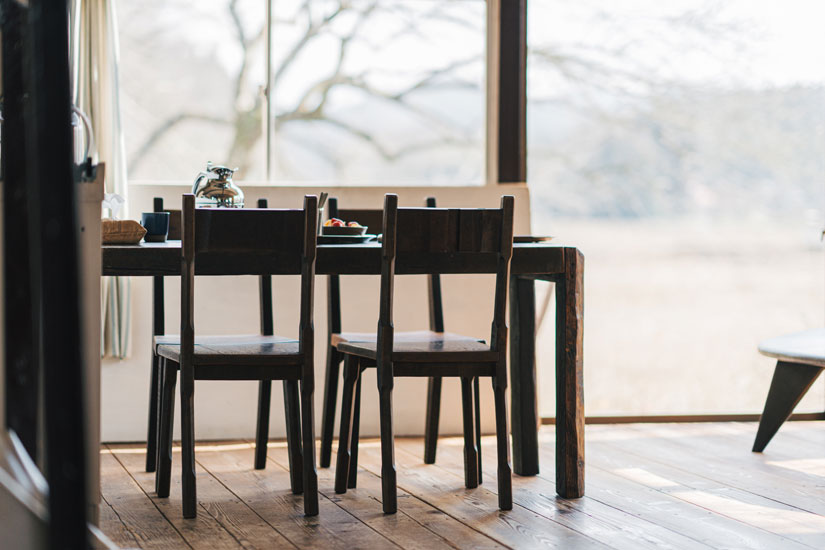
Mr. Takayama, who has lived in Mashiko for 22 years, is originally from Nanao City, Ishikawa Prefecture. After graduating from Bunka Fashion College, he worked in Tokyo making stage costumes and one-of-a-kind clothes and traveling abroad when he earned enough money. At that time, she heard a rumor that “interesting people were gathering in Mashiko.
Before my child was born, I was looking for a good place to live…I wanted to make a hometown for my child when he or she was born. I liked this place because the scenery was somewhat similar to that of my parents’ house.
I was also “happy” with the local people’s understanding of craftsmanship and their culture of looking out for people who are willing to try various things.
Living in Mashiko began with the creation of his home. Furniture Making
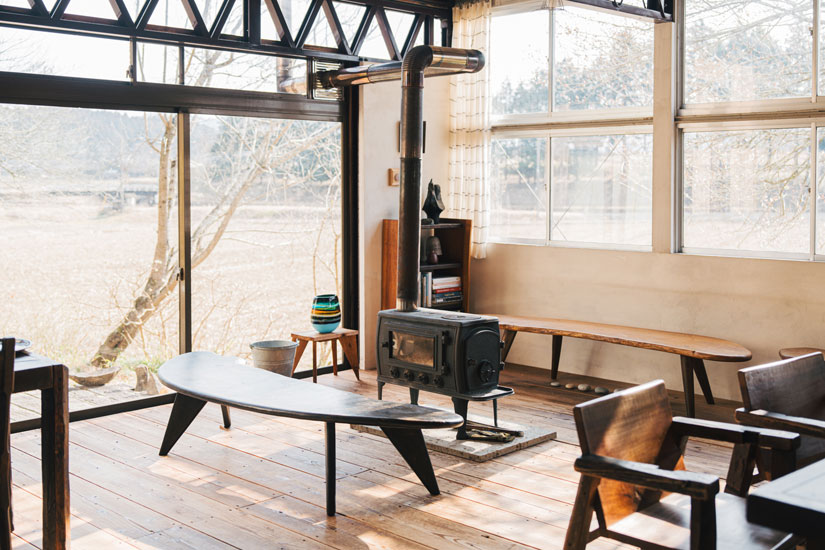
Mr. Takayama’s furniture making started when he joined a restaurant owner in Utsunomiya who was opening a café in Mashiko to work on the interior design.
He was required to make tables and other furniture out of scrap wood and other materials, and this is where he came into contact with furniture making.
Mr. Takayama’s furniture making started as a coincidence. However, it was the start of Takayama’s furniture making, which is typical of him who values “karma”. Takayama’s furniture, which is made by skillfully manipulating wood and naturally fits in with the space, is not something he learned from others.
Learning from others is the only way to fit into a mold,” he says, adding that he started out as a self-taught craftsman, “I learned from working in the fashion industry, so I decided to do what I thought was right. For Mr. Takayama, furniture making is an expression of his way of life.
One way of expressing this is that he does not accept requests unless he has a “connection” with the people involved. Rather than design, he creates furniture by imagining the space where the furniture will be placed, the relationship between the furniture and the people who will use it, and the conversations and time that will be spent there.
He believes that furniture should be born from the necessity of integrating into daily life and connecting people and space.
Connections with People Create Opportunities
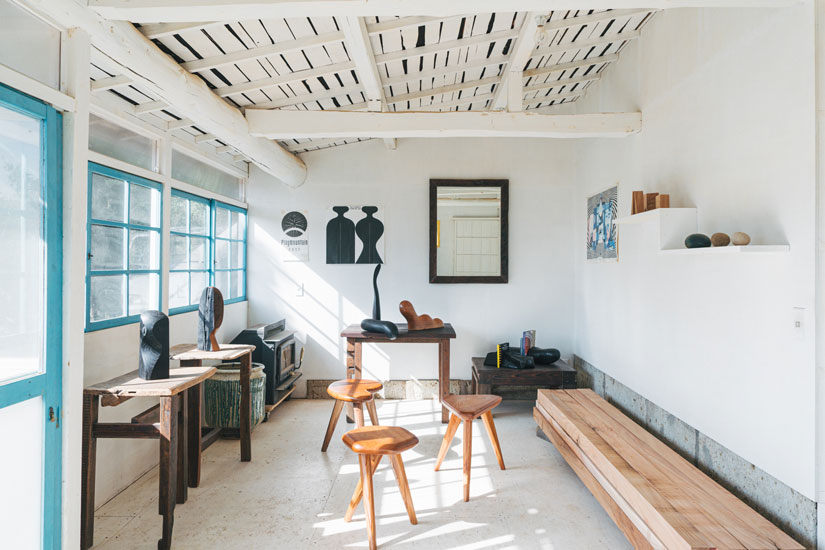
In Mashiko, there is “starnet,” which opened in 1998 with the concept of “living comfortably with what is around you and within your reach. The concept is “living comfortably with what is around you and within your reach.
Mr. Takayama also created a table for “starnet” as a matter of chance. Furthermore, through the connections made at “starnet,” Mr. Takayama’s family has developed a wine-making business led by his son, Genki.
Takayama says with a laugh, “I was thinking of doing furniture making as a handicraft in Mashiko, and now we are talking about wine.
It is a story that is typical of Mr. Takayama, who values human connections.
The Challenge of Winemaking
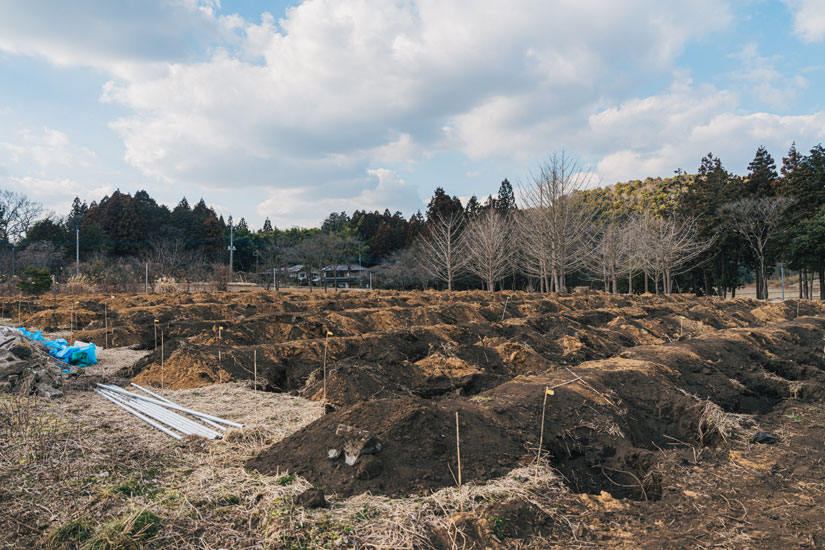
When Mr. Takayama’s son, Genki, was in high school, he asked a friend of the owner of “starnet” if there was anywhere he could go to see handicrafts and art during his summer vacation.
The reply was, “Go to Florence.
Surprised at the thought of going abroad, he decided to take advantage of the opportunity and spent a month of his summer vacation in Italy, where he saw about 30 different kinds of handicrafts and visited about 10 museums.
There, he was shocked by the artistry of the last winery he saw. So, after graduating from high school, he went to Italy to work in the wine industry.
Although it was recommended to him, the flexibility that allowed him to go study in Italy alone while still in high school was due to Mr. Takayama’s own behavior in his youth, “Whenever I earn money, I go on overseas trips.
Vineyards Cultivated by the Family of Three
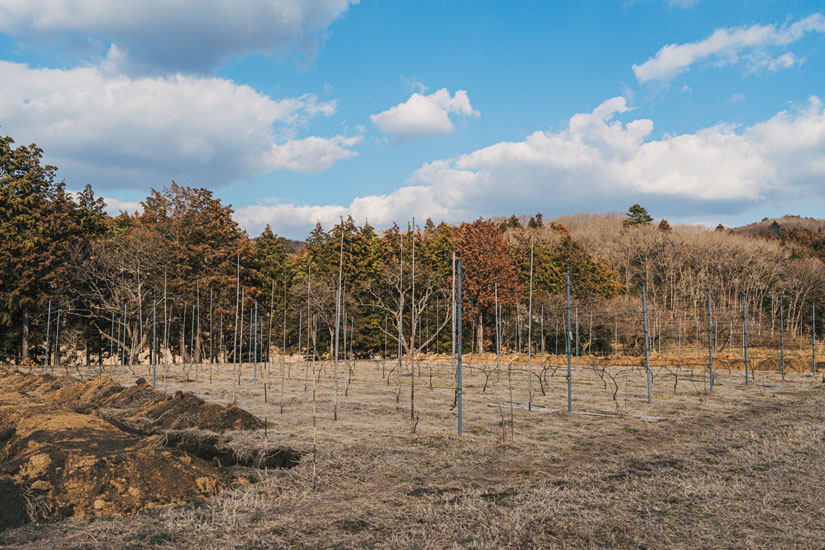
After returning to Japan, Genki realized that the wines he was attracted to were “those that have a relationship with the region in the background” in his study of wine.
When he thought about where he should make wine, he came up with the idea of “making wine in Mashiko.
A senior colleague and an acquaintance connected me to Coco Farm Winery, a winery at Kokoromi Gakuen, a designated support facility for people with disabilities in Ashikaga City, Tochigi Prefecture, and I was able to learn and cooperate with the winery.
Coco Farm Winery” is located in Ashikaga City, Tochigi Prefecture, and is known throughout Japan as one of the leading wineries in Japan, having been used for dinners at international summits.
Furthermore, he was able to collaborate with the local people, and his family of three cultivated land that had begun to fall into disrepair due to aging and lack of management. Now in its third year, the Buto vineyard is planted with nearly 300 vines of 11 varieties, mainly red grapes. In the future, he would like to increase the number of white grapevines as well, depending on the characteristics of the land and other factors.
His father, Mr. Takayama, joined him, his eyes shining with excitement about the future of the vineyard and wine.
Cultivating “Craftsmanship” and Harvest Festivals with Local People
The Takayama family’s wine challenge, led by Genki, has just begun. It is expected to take five to seven years to harvest the grapes, and they hope to spend time “making things” with the local people.
The day may not be far off when their dream of holding a harvest festival comes true, as the three family members smilingly say.
The new challenge of winemaking was also born out of the “connections with people” that Mr. Takayama has always valued.
However, the starting point and core of his activities is furniture making that involves working with wood.
He breathes new life into each piece of old wood, placing importance on dialogue with the client and harmony with the space. Mr. Takayama will continue to make warm furniture in Mashiko that gently accompanies the lives of its users.
